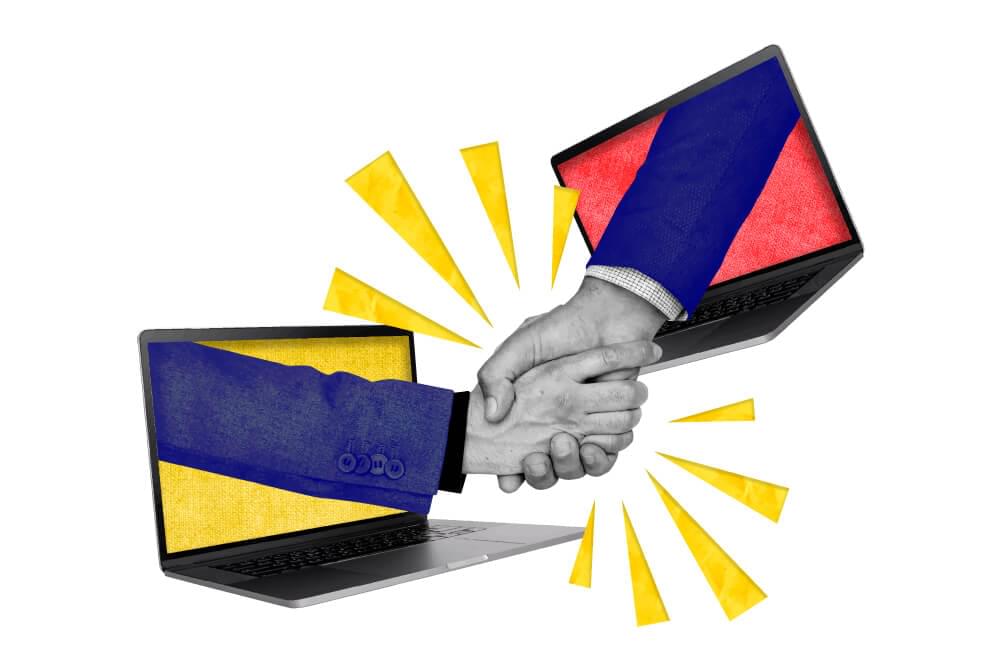
11 Customer Retention Strategies Guaranteed to Work in 2024

Customer retention is crucial for any business and to prevent it you need customer retention strategies. Maintaining a long-lasting relationship with existing customers by fulfilling their needs is key to success. Did you know acquiring a new customer can cost 5-25 times more than retaining an existing one? Loyal customers don’t just mean lower acquisition costs; they’re also more likely to make repeat purchases, become brand advocates, and provide valuable feedback.
In this blog, we’ll share effective strategies to help you create a solid customer retention plan. Let’s dive into the tried and tested tips to keep your customers coming back!
11 Customer Retention Strategies for Businesses in 2024
Retaining existing clients is a major concern for businesses today because it is low-cost and high-profit. Enhancing your retention efforts by just 5% can increase your profit by 25-95%. Creating a customer retention plan offers a systematic approach to improving customer experience, managing resources, optimizing marketing strategies, and defining objectives.
Here are some strategies you can use to retain your customers.
1- Create a strong onboarding experience
First impressions matter, and you only have one chance to make a good impression and a good customer relationship. Make your onboarding process simple and essential by explaining each feature concisely. At the end, ask for a demo if there is anything they want to know more about. A good onboarding experience is effective to reduce customer churn and increases satisfaction and loyalty. Tailor the onboarding process to each individual customer, considering their specific needs and goals.
Be responsive throughout the process, addressing concerns and showing appreciation for their business. Set clear expectations so customers know what to do at each step and what they can expect from you. Creating a strong onboarding experience doesn’t have to be complicated—just keep it personal, simple, responsive, and clear.
2- Understand your customers’ needs
The first step to business growth is to understand your customer needs aligned with your product. Without knowing what they seek, persuading consumers becomes challenging. Every business should focus on identifying and meeting customer needs to build a solid customer base. Companies centered around customers are 60% more profitable than those that overlook them.
Analyse customer feedback and improve your product to make it more valuable to customers. This will also give customers a sense of importance, as they will feel more connected to the product. Provide your customers with personalized solutions, if possible so that they can relate to your product and make more out of it. There is a study by Accenture, 91% of consumers are more likely to do business with a company if it offers personalized experiences.
3- Build customer trust with your product
Trust is the foundation of any good relationship, and it’s no different when it comes to business. Your customers need to trust that you’re going to deliver on your promises and that they can rely on you to do what you say you’re going to do.
Customers appreciate honesty and transparency, so make sure you’re always upfront with them about what you can and can’t do. Always keep your promise if you offer something that should work properly so that the client gets satisfied. You can also win customers; trust by communicating properly with them.
4- Response to customer queries quickly
Provide 24/7 customer support to your clients so if they get stuck anywhere or need to know more about any feature, they can get a reply right on time. If the customer’s query is resolved within minutes, they will be happy, and their work is not delayed because of any minor or major hurdles they faced in the product, which leads them to relay on your product. If your customer support is just for some hours and a client needs assistance outside those times, it potentially reduces their satisfaction and interest in your product, even if the query is minor.
5- Give importance to your customer feedback
It’s no secret that customer feedback is important for businesses. It helps you understand what your customers want and need and what they like and don’t like about your product or service. Collect customer feedback regularly and analyze it carefully, if you find anything that is beneficial for your product or services, implement it.
It can be challenging, but it’s essential for retaining customer loyalty and growing your business.

6- Rewarding customer loyalty
Boost customer retention by offering rewards or discounts to existing customers. This shows appreciation for their loyalty and reinforces that you value their business. Additionally, offering referral bonuses encourages existing customers to bring in new clients, further enhancing customer retention.
There are some rewards you can offer to your customers:
- Discount offers
- Loyalty bonuses
- Referral bonuses
- VIP event invitations
- Early access benefits
7- Send them the company newsletter
Your company newsletter is one of the most important things in your customer retention strategy. It’s a great way to keep your customers up-to-date and engaged. You can increase customer interest by sharing upcoming features and other updates in a newsletter. This creates a sense of security that the product or service is continuously improving, offering more value over time.
Even if you are not upgrading your features, you can still send a newsletter that reminds customers more about your products/services, which can engage clients with your brand.
8- Focus on product and service quality
To keep customers coming back, it’s important to give them great delivery experiences so they stay happy and don’t leave unexpectedly. Quality management ensures your products and services always meet high standards.
Improving product quality is key to making more money in the long run and growing your sales. When your products are top-notch, you’ll have fewer complaints and a higher customer retention rate. This directly boosts your profits and sets the stage for expanding your business.

9- Offer unique services
What’s the best way to customer winback? Offer unique services that they can’t find anywhere else. Think about what makes your business special and use that to your advantage. If you have a unique feature or service, make sure your customers know about it. Let them know what sets you apart from the competition and why they should come back to you again and again.
10 - Start a customer education program
To keep your business growing, you must focus on keeping your customers happy.
One of the best approaches to robust customer retention is to start a customer education program. By teaching your customers about your product or service, you’ll not only help them get more value from what they’ve purchased from you but also increase the chances that they’ll continue doing business with you in the future.
You can write product documentation, FAQs, and explainer blogs to help people understand how they can use your product or service easily. If any of your customers need personal training, you can offer a demo to show them how they can use your product effectively.
11 - Build customer community
It’s a great idea to create a community for your existing clients where they can communicate and ask questions about your product or service, and it can engage the customer more with the product. People can also share tips and hacks for their business growth. This community allows you to have direct communication with your clients and understand their perspectives accurately.

How Can You Calculate the Customer Retention Rate?
To find the customer retention rate, you need to take the total count of new customers and divide it by the number of customers you initially had at the start of the given period.
Here is the customer retention rate calculator:
Customer Retention Rate = (Total # of Customers at the end of the Period - New Customers Acquired) / Customers at the Start of the Period
Related Read:
Average Churn Rate for Subscription Services
How to Calculate Churn Rate SaaS
Final thoughts
Implementing a well-researched and carefully created customer retention plan can bring success and sustained growth to your business. By focusing on building strong relationships through personalized onboarding, understanding customer needs, maintaining trust, and providing exceptional support and rewards, businesses can significantly reduce churn and enhance customer loyalty. Remember, it’s the ongoing commitment to meeting customer expectations that ultimately generates loyalty and propels your business forward. By prioritizing these strategies, businesses can foster long-lasting customer relationships, leading to increased profitability and brand advocacy.
FAQs
What is the customer retention rate?
The customer retention rate is a metric that businesses use to measure customer loyalty and success over time. To enhance customer retention, businesses implement various strategies to reduce churn by improving customer experiences, ensuring that customers remain loyal to the company.
What role does social media play in customer retention?
Social media platforms are valuable for engaging customers, gathering feedback, and fostering relationships. Use them to connect, share insights, and address customer queries promptly.
Can automation enhance customer retention efforts?
Yes, automation, like using AI-based customer retention platforms streamlines processes, allowing for personalized interactions, timely responses, and efficient customer support, ultimately improving retention rates.
What are the crucial metrics to measure for customer retention?
Key metrics include customer churn rate, customer lifetime value (CLV), repeat purchase rate, and Net Promoter Score (NPS). These metrics provide insights into retention success.

